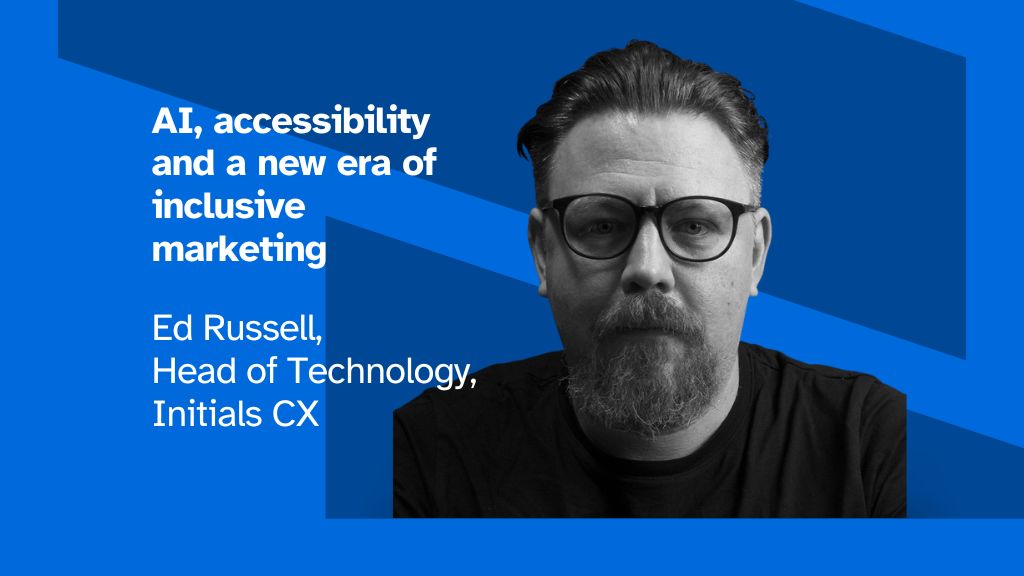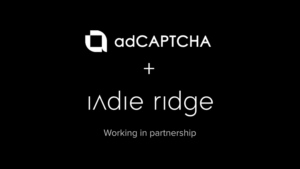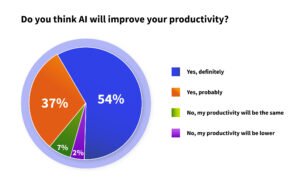by Ed Russell, Head of Technology, Initials CX
At the click of a button, AI can create an adaptive, unique experience that’s different depending on the user’s demographic.
In the blink of an eye, it can take content and generate it ten different ways for ten different needs.
But how can brands maximise AI’s capabilities to usher in a new era of inclusive marketing?
The inclusivity era is here
AI is already impacting accessibility solutions.
Visit YouTube and you’ll notice that closed captions generated by speech recognition AI are available on every video.
Whilst first launched in 2009, the solution’s efficacy and underlying machine learning means it’s now a default option which creators need to disable not enable.
Similarly, tools exist to help creators improve their page’s accessibility by writing clearer copy and automatically add descriptions to images.
What’s more, the toolset to help developers write better, accessible, websites is improving – though issues with the AI giving misleading information are still too common to trust it completely.
Looking ahead, we’ve seen dynamic content adaption be proposed.
This would allow a website, powered by adaptive AI, to automatically adjust its content, layout, and functionality based on the user’s needs and preferences.
These tools are just the tip of the iceberg. The revolution will come with how web content is accessed rather than the content itself.
For example, look at how Perplexity is disrupting the search engine industry. It’s a different kind of “knowledge discovery engine” that helps the user answer questions using a more conversational interface than a traditional search engine’s web links.
The answers given are cross referenced to sources, but it isn’t trying to move the user onward to a particular website. Instead, it answers the question by understanding the data sources the user would’ve returned if they’d used a traditional search engine.
It couples this with some knowledge of the question and user’s context, to tell the user what they want to know and other questions they might consider next.
This points to different ways of content being accessed in the future.
What does this mean for brands?
As developers we spend significant time thinking about how machines “see” our site: be that the Google bot so we can rank better or a screen-reader that can help a sight impaired user navigate quickly.
Both processes are relatively “dumb”, but AI will significantly change how this will work.
Simply, this could allow a site to be processed by an AI that understands the content.
The users’ device can couple this by understanding the intention of a particular visit so that a screen-reader can navigate the site without considering every element. Or a translation AI could take the relevant content and convert it into terms understandable by someone with a cognitive impairment.
The advantage to this being done by your access device is that the users’ privacy is always maintained.
The end of this process could be that what we understand as a “website” will no longer be accessed by a human. Instead, the human tasks the AI with finding information by interacting with services and sites it can find.
But what does this mean for brands and their marketing?
Almost ironically, we might see further emphasis placed on “offline” brand-building through consumed media or traditionally offline ads, in the hope that when AI shows the consumer products without the full context, they’ll gravitate to brands they view positively. Or vice versa, the consumer will steer the AI towards a brand they’ve seen offline.
This could lead to AI placing customers in a feedback loop where they end up only seeing certain brands. For example, when looking for a TV, the AI assistant knows the consumer likes Sony, so they will only see Sony products.
This will create an arms race as brands vie for customers’ attention offline so they can be favoured online.












